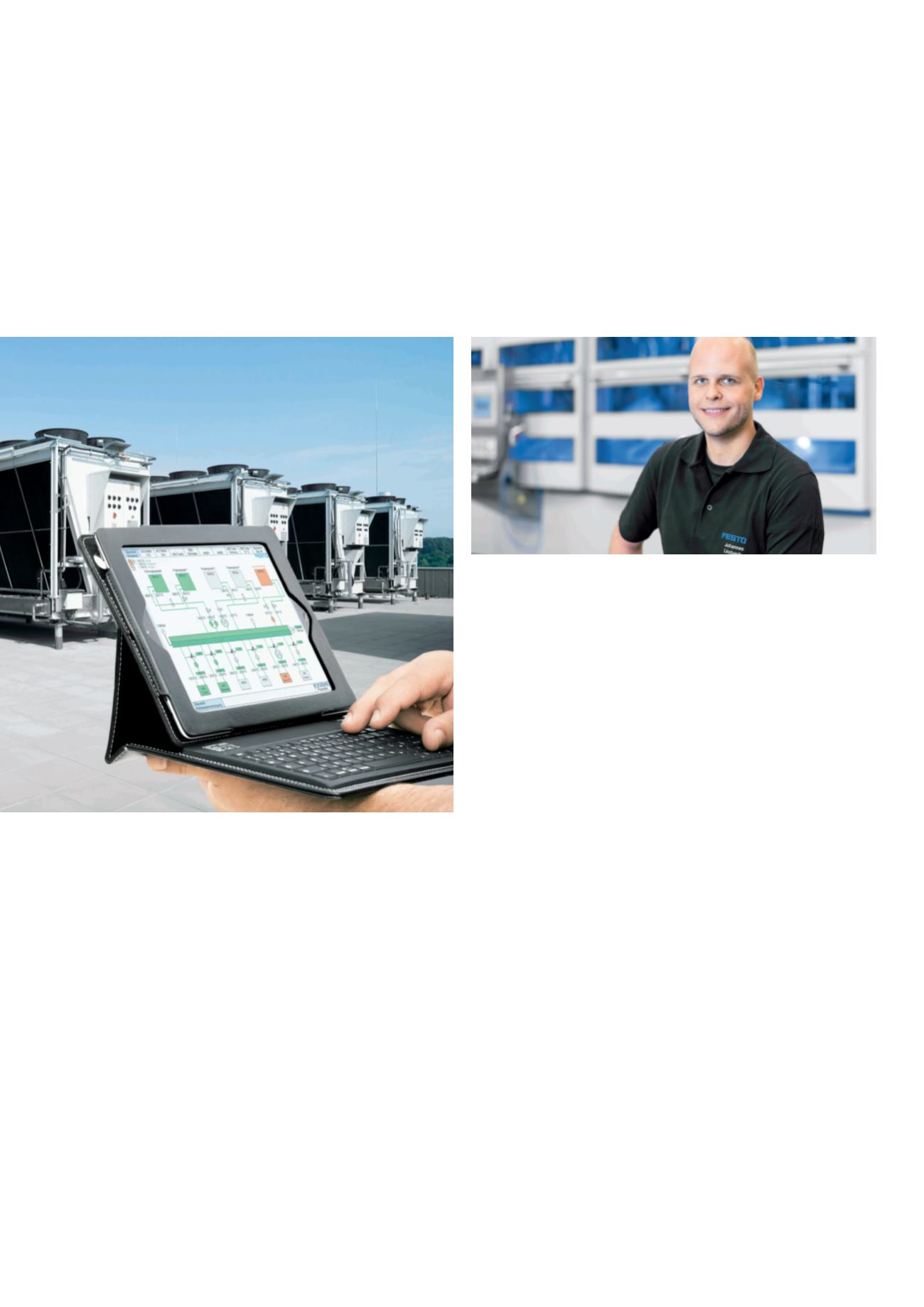

Scharnhausen Technology Plant: Energy efficiency planned and put into practice
02 The experts are able to monitor the
safe operation of the buildings and facili-
ties via a tablet.
01 Training courses on energy
efficiency are part of the education
programme in the Technology Plant.
Flair for energy
The physical background for calculating the Sankey diagram is the
conservation of energy principle: every energy flow into the factory
must also leave it at the same intensity.
Strong flows are symbolised by thick arrows, weak flows by thin
arrows. The arrow thicknesses correspond exactly to the energy
flows and thus make them transparent.
Scales and effects can be estimated at a glance. The Sankey dia-
gram can make it easier to understand the routes of power distri-
bution or carbon dioxide emissions and to directly read off interac-
tions.
Planned and constructed
Two natural gas-operated combined heat and power stations with
a total output of around 1.8 megawatts ensure a basic energy sup-
ply to the site today. A combined heat and power station generates
electricity and heat at the same time, with an overall efficiency
»We are working on a networked and intelligent energy
transparency system. By this means we can disclose
current consumption figures to every employee on-site
and make potential savings visible. Transparency in the
energy consumption figures is the key to becoming
more efficient. We have laid the foundations for this with
a measuring system that provides us with this data.«
level of around 95 per cent. The heat is used for heating purposes
in the cold part of the year. During the summer months, it is con-
verted – together with the waste heat from the air compressors –
into cooling for production with the aid of absorption chillers.
Although the consumption of natural gas increases by operating
the combined heat and power stations, overall efficiency is consid-
erably improved and unwanted emissions are significantly
reduced. Energy is also recovered in the machining department:
waste heat given off by the machines is transferred into the ground
by means of concrete core activation and utilised according to the
underfloor heating principle. The result of the energy networking
of production and buildings is lower consumption, less costs and
lower emissions.
Johannes Linzbach, Production Systems Research
19
02
















